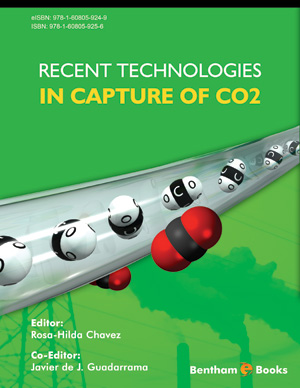Abstract
Comparison of rate-based models (RBM) and equilibrium models (EQM) for absorption of CO2 in ammonia, along with details on selecting process equipment, are presented in the first part of the Chapter. Differences in temperature and concentration profiles along a 10-stage packed column were found with the two models. In EQM, liquid temperature matches the inlet gas temperature at the fourth stage and remains constant until the bottom of the column. Oppositely, three temperature profiles were obtained in RBM: interface, gas, and liquid streams; temperatures in the EQM were almost 10 °C higher than in the RBM. For intermediate stages, the EQM predicted higher mol fraction of CO2 than RBM.
A non-equilibrium stage, rate-based model is developed in the second part of the chapter. Simultaneous mass and energy transfer through the gas-liquid interface, as well as the hydrodynamics of packed columns with the corresponding correlations to calculate pressure drop, liquid hold up and mass transfer coefficients, are included in the model which is based on absorption segments. Simulation of the absorption of CO2, from a mixture with ammonia indicated more than 80% of absorption of CO2; complete absorption of SO2 and NO2 present in the stream could also be accomplished. It was necessary to increase ammonia concentration in the lean solution and implement an ammonia washer in order to avoid ammonia slip. These results were used for sizing a packed column for the treatment of a gas stream with a composition similar to that expected from a wet cement kiln.
Keywords: Carbon dioxide, absorption, ammonia, design, rate-based models, equilibrium models, ASPEN, NOx, SO2.
















